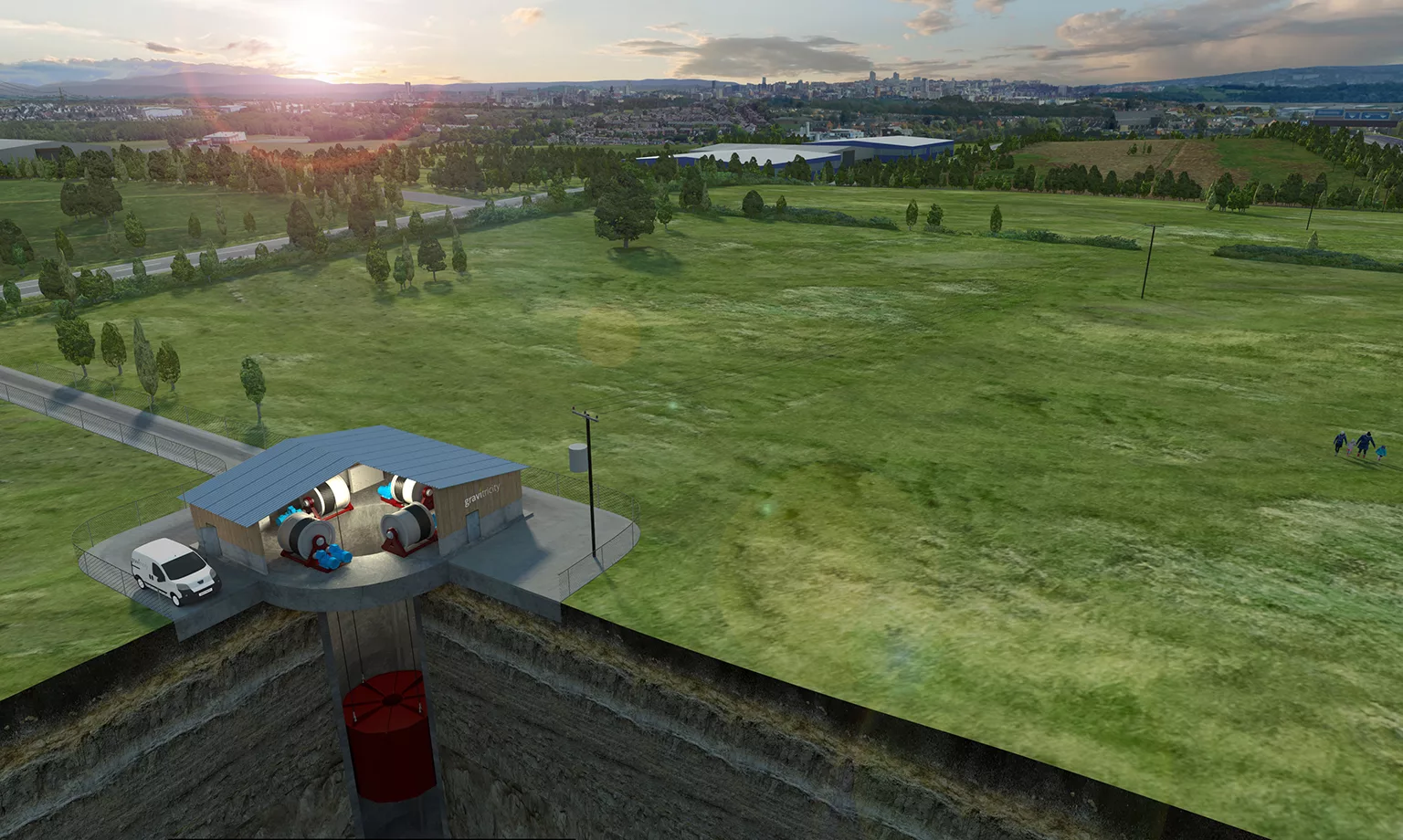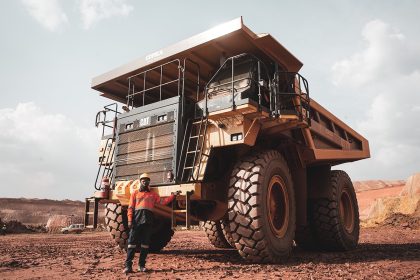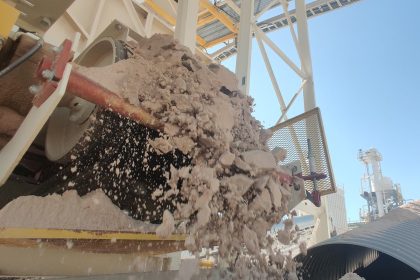Mine owners across Europe are looking at an alternative form of underground energy storage that offers a low-carbon future as operations wind down.
GRAVITY FOR A GREEN FUTURE
As the world generates more electricity from intermittent renewable energy sources, there is a growing need for technologies that can capture and store energy during periods of low demand and release it rapidly when required.
Gravity energy storage offers a powerful green opportunity for mine operators looking to extend a mine’s life beyond the extraction of materials.
The idea of using gravity to store energy is not new, however, as Great Britain already relies on a number of pumped storage hydro schemes, such as Cruachan Power Station, where water is pumped uphill to be released when required.
Based in Edinburgh, Gravitricity has developed a new, innovative gravity energy storage system known as GraviStore.
Using the force of gravity, this unique technology raises and lowers heavy weights suspended by cables attached to winches in underground mine shafts, offering some of the best characteristics of pumped hydro storage and lithium-ion batteries without any reduction in performance.
When there is excess electricity, for example on a windy day, the weight is winched to the top of the shaft ready to generate power.
It can then be quickly released when required in less than a second, producing a large burst of electricity, or more slowly depending on what is needed.
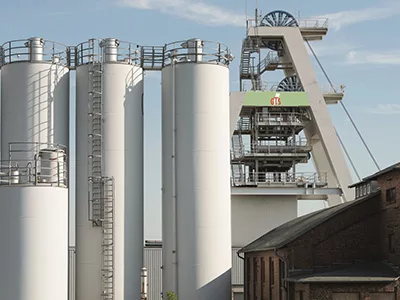
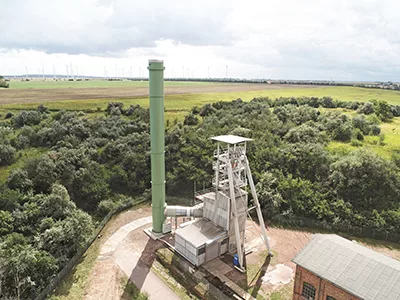
VIABLE ALTERNATIVE
GraviStore therefore presents a viable alternative future to end-of-life mine shafts, which otherwise require steep infilling and decommissioning expenses. Indeed, the decommissioning process is costly and can be time-consuming for mining companies.
Disused mine shafts repurposed for energy storage, however, can fill a productive function for up to half a century beyond their original lifespan and eliminate decommissioning costs, while creating new job opportunities and contributing to the green energy transition.
Gravitricity has an expanding portfolio of intellectual property in underground energy storage, including eight granted patents and a further two pending, and is exploring the potential to deploy its groundbreaking technology in decommissioned mines worldwide.
To commercialise the technology for mine operators, the Scottish company has teamed up with energy multinational, ABB, and lifting specialist, Huisman.
Ideally suited to recently decommissioned mines where existing shafts and winches can be repurposed, the GraviStore technology is now generating interest among mine operators who are seeking sustainable alternatives to decommissioning.
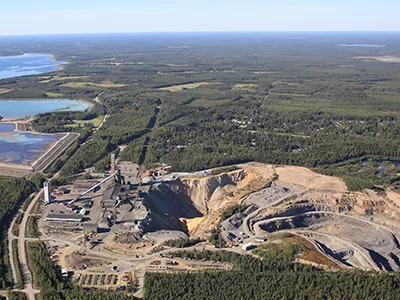
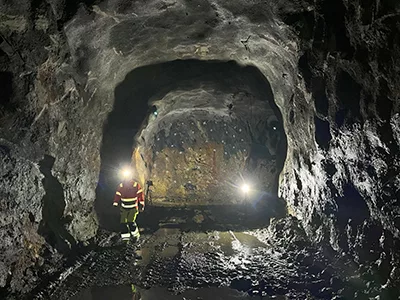
EUROPEAN PROJECTS
Active deep mine operators in Europe are examining how underground gravity energy storage could present green opportunities to mining communities.
Current Gravitricity projects include the Velenje mine in the northeast of Slovenia, where a feasibility study has been commissioned to explore how underground gravity energy storage could offer a low-carbon future as operations wind down in the 2030s.
More from Mining Outlook
At Velenje, Gravitricity engineers have already visited the site to assess the technical feasibility of installing systems in two specific shafts.
Studies are also ongoing at the Pyhäsalmi, Darvok, and Grube Teutschenthal mines, with the potential to advance pilot projects in the near future.
At Pyhäsalmi, Europe’s deepest zinc and copper mine located in Northern Finland, the company is also aiming to demonstrate its GraviStore system.
Decommissioned in 2022, many of the Pyhäsalmi mine’s operations have now ended, but by repurposing the disused mine shaft for underground energy storage using the company’s technology, new opportunities could be offered for this remote Finnish community.
Should GraviStore be deployed at the mine, it would deliver up to two megawatts (MW) of storage capacity, tying straight into the local electricity grid and providing balancing services to the Finnish network.
Gravitricity has also committed to work on green energy storage at the Darkov mine in Czechia and investigated the potential of storing energy at the decommissioned Grube Teutschenthal mine in Germany.
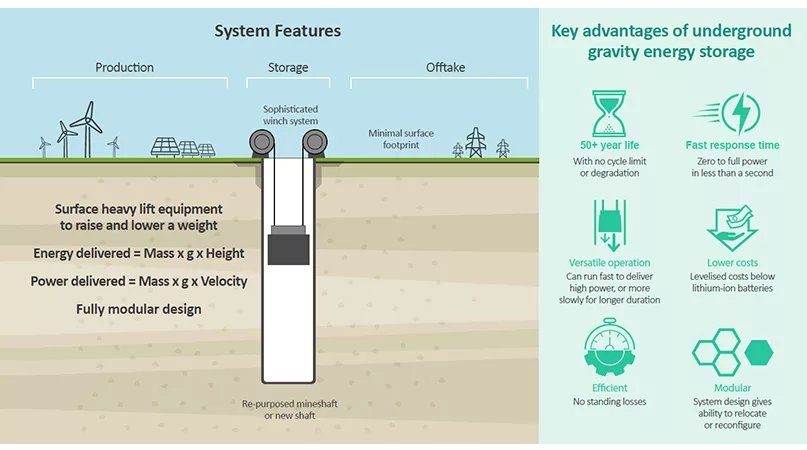
EMPLOYMENT OPPORTUNITIES
In addition to being a genuine alternative to decommissioning, new underground energy storage schemes can provide employment in communities where traditional jobs are in decline.
Gravitricity’s work with mine operators underlines the interest in its technology, and the company is in dialogue with both mine owners and public sector organisations to turn these studies into operational plans.
The company has already proven its GraviStore technology with an above-ground 250 kilowatt (kW) demonstrator, where it successfully raised and lowered two 25-tonne weights to generate full power and verify the system’s speed of response.
Impressively, the test rig proved the system can reach full capacity in less than a second, which can be extremely valuable in the frequency response and back-up power markets along with its ability to continuously vary power output dependent on demand.



